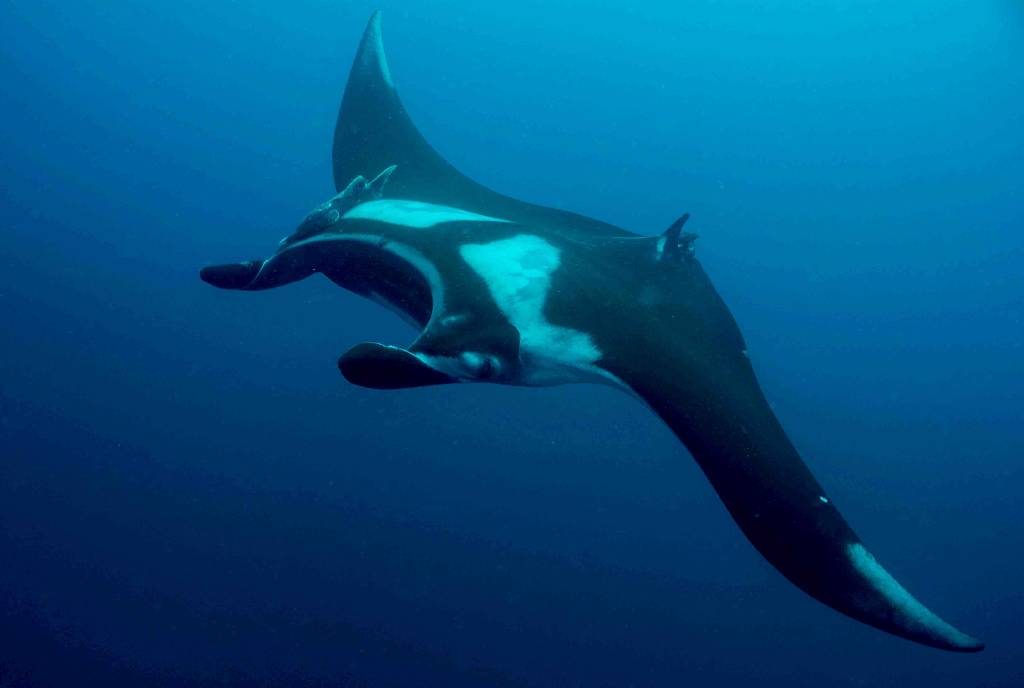Manta Rays Facts
One experience that remains etched in your memory forever is the sighting of manta rays. If you visit Nusa Penida and do diving, you will definitely get to see one of these (unless you are the rare unlucky ones). They are enormous but when you see them swimming in the ocean, they tend to glide effortlessly and with a lot of grace.
Once you spot that first manta ray, you will want to schedule more dives in that particular area because you are hoping to see another one. These creatures are mesmerizing and there’s a number of things that make them absolutely fascinating:
- Manta is a Spanish word that is translated literally to mean ‘blanket’. When you see them floating on the ocean’s surface, they tend to look like a big black blanket. This is how they got their name.
- Once a mama manta mates, it takes close to a year to give birth to the baby. When you see a baby manta, you will simply be looking at a smaller version of the adult.
- The ratio of brain to the body weight of a manta is the highest among sea animals. In fact, they are much more intelligent than bottlenose dolphins.
- Manta rays are very big but they eat zooplankton which are tiny creatures living in the water. These include segmented worms and prawns as well as other small crustaceans.
- Manta rays have spots located on their underbelly by which they can be individually identified just like the leopard shark. It is these spots that enable one to differentiate them from devil rays which are their cousins.
- These amazing creatures are native to subtropical and tropical waters, which is why they are found in Indonesia, New Zealand, and Australia. You may also find them in Maldives, Bahamas, Thailand, Fiji and Spain.
- Mantas are fish that enjoy the flight as well. From time to time, they have been known to leap clear out of the water. This is believed to have something to do with mating rituals or communication. Scientists are still trying to figure it out.
- In order to live, they need to constantly be in motion so water can pass over their gills.
- A full grown manta has an average wingspan seven meters and they can weigh as much as two tons.
- They have a layer of mucus that covers their skin for protection and touching them can remove it.
- They are enormous in size but completely harmless.
Manta rays can be found throughout the year in Nusa Penida but the best time to see manta ray in Nusa Penida is from April – May where the water conditions are the most calm. Scuba Center Asia is a dive Center in Lembongan that can guide you to see this beautiful gladiator. You can Find us here.



